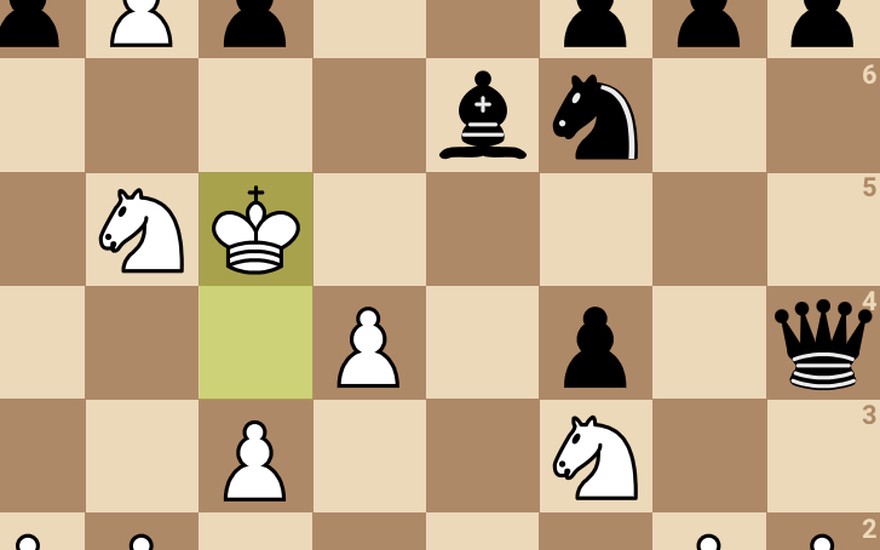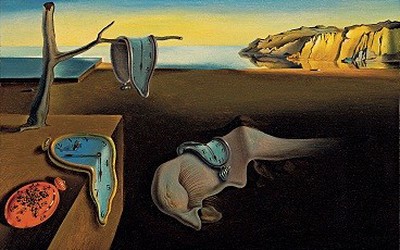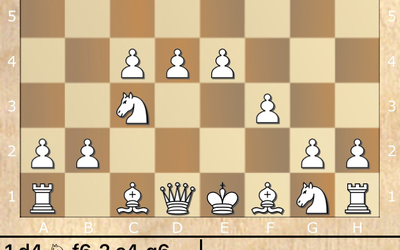
The Walk of No Shame (Opening Repertoire Ideas for Bongcloud Fanatics)
If you asked several chess players to make a list of the swaggiest things one can pull off in a game, a king walk would have to be high on that list. Active kings always cause quite a sensation and bring about vibes of an action hero dodging several bullets in the heat of battle. In this article we will take a look at several examples of king walks in the opening that actually have legitimate merit and have earned their place in chess theory.When it comes to opening preparation, the quality of available literature and engines aren't the only things to become strengthened. One must not underestimate the meme game becoming collectively stronger in the past several years. No, I'm not talking about the seemingly endless supply of patzer memes obsessed with en-passant or smothered mate, I'm talking about things like the bongcloud making their appearance on continuously higher stages. The following game by Hikaru Nakamura is an example of this phenomenon, having clinched the elite rapid tournament in which this game was played, Nakamura decided to have a little fun and play the bongcloud vs former World Junior Champion Jeffrey Xiong.
Inspired by this I decided to see if I could pull off the bongcloud in a rapid game vs a fellow National Master, against all odds I won. To make it even more stressful this game was played in the States Cup; a team rapid event. You can bet I was worried about what my teammates would say if I were to lose, here's the game.
All joking aside, there are several examples in opening theory centered upon an early stroll with the king. If one would like to attempt such a stroll they would do well by abiding by looking for the following preconditions:
1. A closed center: With a lack of conflict in the center of the board, the character of play generally slows down, thus enabling the king to take a stroll. We can see examples of this in Kovacevic-Seirawan and Georgiev-Yusupov
2. A semi-closed center: Obviously if the center is totally locked a king can take a stroll. However in this center type we basically describe a central position that is determined for now but not totally resolved. Examples of this center type can be seen in Steinitz-Paulsen and McClymont-McClaren
3. Types of center aside it's possible to see a king take a stroll to avoid castling into an attack as we see in Erdos-Firouzja and Georgiev-Yusupov. There are even cases of kings taking a stroll after castling to return to the center or opposite sides of the board to weather a storm. However these examples are beyond the scope of this article and opening theory as well, generally speaking. Sometimes the king-walk is self inflicted like the my game below, as well as the Steinitz examples.
Here is a self-inflicted king walk I had to do when I forgot my opening analysis
The first world champion Wilhelm Steinitz was a pioneer of the active king in the opening, see the following examples.
Even though the following game supposedly "played" by a friend of Steinitz never occurred, it's still a breathtaking example of the lengths an active king can go to assist their own army.
Look at how active Steinitz's king got in this game!
In the following game we see Anatoly Karpov, one of the most cautious world champions of all time, make a daring king move in the opening in order to highlight white's unfortunately placed queen
Here we see Korchnoi take advantage of a locked center to add an original twist to a standard-looking Czech Benoni
Sometimes a king walk can become a mainstay plan of a common opening! See the two following examples from the French Winawer that have become accepted as standard theory
Yasser Seirawan is no stranger to the king walk having written a book on the subject! Here is an example from his earlier years
The modern generation of chess players have shown chess to be an increasingly concrete game. Unbothered by the dogmas of the past, chess players these days are more likely to take into account the specific features of a position rather than adhere to some sort of classical narrative. See the following game by Firouzja that caused quite a stir at the time
The following example is one of the most shocking examples of a king walk I have ever seen to date. Going off the intro to the previous game, narratives about classical positions and their treatments seem to being rewritten by super strong computers. See the following game for an absolutely unique plan for white in the hedgehog
Hopefully the reader can find some inspiration in these creative examples and we can soon add more early strolls to this collection!
Sources: Kingwalks: Paths of Glory by Yasser Seirawan and Bruce Harper
My Great Predecessors Vol. 1 by Garry Kasparov
More blog posts by Vitamixbrand

Ecstasy and Agony in the 6.Bc4 Najdorf
Opening preparation these days is a vastly different creature than it was 5-10 years ago. Increased …
Intriguing examples of voluntary time loss in the opening
Modern chess has become and continues to be an increasingly concrete game. General considerations an…
Stunners in the Samisch-Benoni/KID complex
The King's Indian Defense is one of the most challenging yet rewarding defenses available to black. …